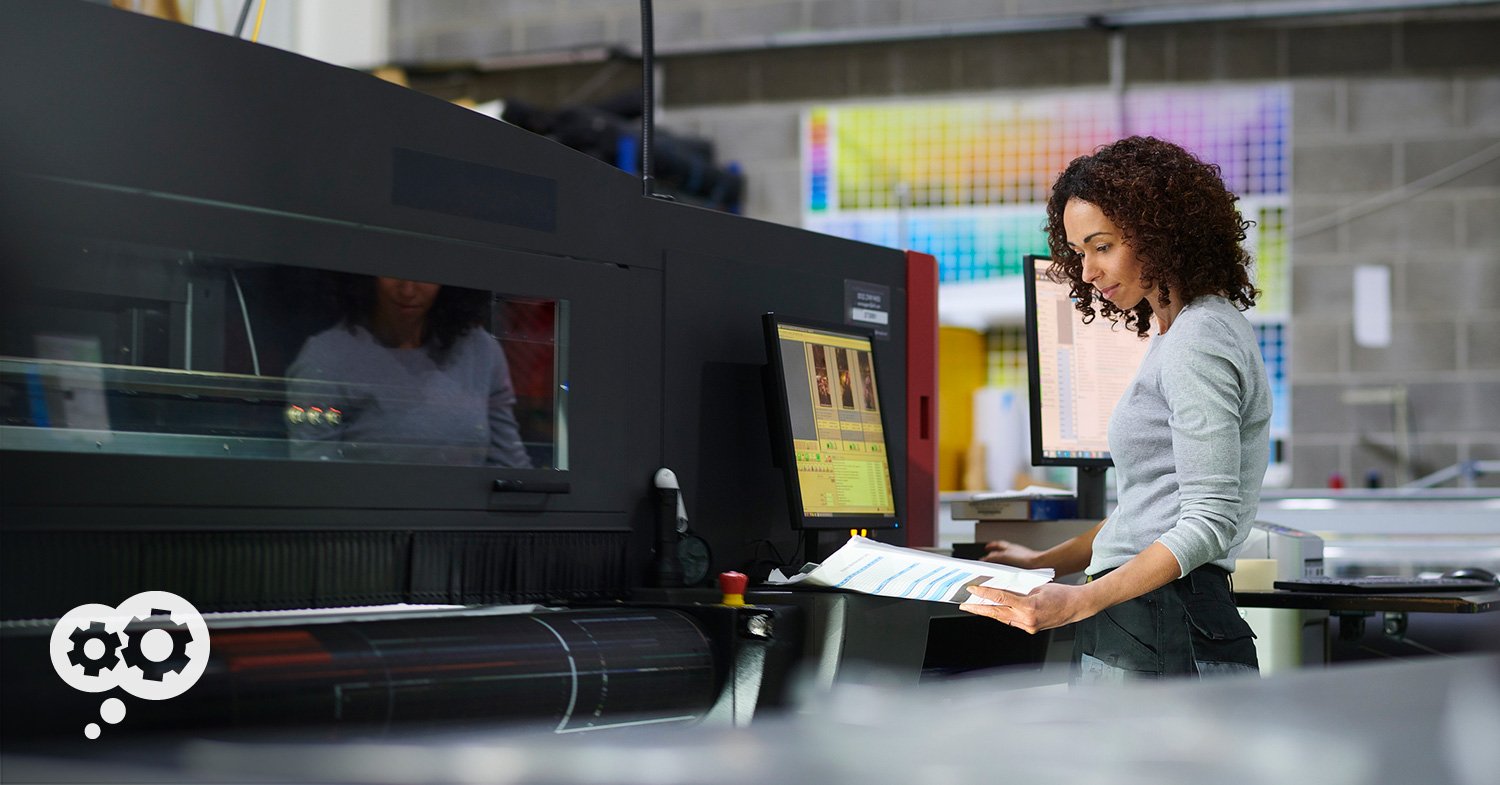
In-plants are facing heightened competition for filling press capacity, keeping work in-house, and adapting to a changing landscape. There’s little room for leaning on “the way we’ve always done it.”
There’s this old joke about plants and generational groups. “What did the young plant say to the old plant? OK, bloomer.” Jokes aside, there’s relevance to that pun here... plant or in-plant. As the COVID era wanes and parent organizations get back to full speed, and as print/buyer demands continue to evolve, there’s no denying the fact that, for in-plant printers, the times are changing. In-plants are facing heightened competition for filling press capacity, keeping work in-house, and adapting to a changing landscape. There’s little room for leaning on “the way we’ve always done it:” The need for in-plants to diversify or drop their proverbial leaves is a valid concern.
As part of an ongoing series, Canon USA recently published a Research Study titled “Propelling your business forward in an ever-changing competitive environment: Enhancing the In-Plant Product and Service Offering.” The white paper compiles a plethora of survey data from commercial printers, in-plants, and communication buyers to help printers adapt, to changing conditions, enhance their value to the parent organization, and apply methods that others out there are finding success with.
We took a stab at a few of the highlights. Below you’ll read 5 areas in-plants today are exploring to help them enhance services and meet their parent organization's needs.
What is an In-Plant Printer, Exactly?
The in-plant printing operation (also known as a central reprographics department) serves as a centralized print management service, with individuals or a group responsible for efficiently meeting the organization at large paper-based requirements. Organizations such as schools, hospitals, or large companies use these to help control price and supply. However, in-plant printers are not considered commercial printers, as they are designed to meet the specific needs of their parent organization.
What are Some of the Top Challenges Facing In-Plant Printers Right Now?
According to the study, below are the top five challenges shared by those surveyed:
- Finding New Print Work to Replace Decreasing Volumes (52%)
- Getting Approval to Add Needed Equipment or Services (44%)
- Keeping the Shop Fully Staffed (37%)
- Ending the year with a profit (31%)
- Retirement/departure of key employees (31%)
5 Areas In-Plant Printers Can Boost Print Production Operations.
1. Getting “in” on in-sourcing.
Perhaps surprisingly to those outside the print room, it’s rare for parent organizations to mandate that all departments send their printing to the on-site source. 41 percent of survey respondents said that enjoyed the “right of first refusal” for printing before it’s outsourced. What does this mean in the end? Most in-plants must compete with outside commercial printers by demonstrating better service, price, and overall quality.
A workaround is what is known as in-sourcing, or accepting work from outside the parent organization to find work. 54% of in-plant printers surveyed reported doing this. According to the whitepaper, “Typically, in-plants get this work from a variety of sources. University and school district in-plants may take in jobs from other educational institutions while state government in-plants often produce work for local municipalities. In addition, nonprofits are a rich source of insourcing work for many in-plants.”
2. Going “wider” with their available services.
In-plants surveyed expressed taking action to expand their products and services to better serve customers and build relevance. In juxtaposing the past, present, and future of service distribution, two things are clear: Digital printing continues to expand and influence the decline of offset printing - the digital press is an emerging system of choice. Secondly, there is growing potential in the capabilities of wide-format digital printing and variable data printing.
Over two-thirds of in-plant respondents report offering prepress services (80%), graphic design services (79%), and online ordering (71%). A majority report offering mailing (69%) and print procurement services (68%) while over half offer warehousing fulfillment (51%).
3. Investing in workflow automation.
Automating workflows can provide a big boost to efficiency. Tools like hot folders and presets, job imposition automation, basic prepress automation, and more can help reduce production costs and meet quicker turnaround time demands. Read more about the Building Blocks of production automation in this eBook! .png?width=250&height=201&name=E-Book-Template-EFI-6-Easy-Ways-to-Streamline-Your-Print-Production%20(1).png)
Generally speaking, In-plant respondents in the Canon report that their operations have some level of automation across workflow activities, with plenty of room to expand. The most frequently automated activities include job submission (70%), prepress makeready (65%), estimating (62%), and job reporting (60%); the least automated area is the bindery.
4. Migrating to the cloud.
Like any other industry, software is continuously moving to cloud-based platforms. While the majority of in-plants report that job submission, workflow, file storage, and color management software mostly reside onsite, they expect growth in the migration of this software to the cloud within two years.
There are tangible advantages here. By migrating to a cloud-based system, in-plants can reap advantages without the hassle and the costs associated with maintaining, upgrading, and staffing the onsite infrastructure.
5. Taking a hard look at hiring challenges.
Everyone it seems is having a hard time finding qualified workers. Over one-third of in-plant survey respondents reported that a key challenge is keeping their operation fully staffed.
Those surveyed revealed a variety of different methodologies for successful hiring. Here’s a few of them:
- Online job site tools like Indeed, Monster, Career Builder, etc. (39%)
- Employee referrals (28%)
- LinkedIn Recruiting services (25%)
- Personal networks and referrals (25%)
- Classified ads (21%)
- Internship programs (14%)
- Online social media (13%)
Is your in-plant seeking ways to better serve customer needs as they evolve? Are you ready to pursue new strategies to help you add value to your parent organization and meet new values? Our Datamax Production Print Specialists can help you maximize your return on in-plant printer investment! Click to schedule your visit.
SOURCE: Canon

